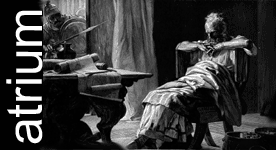From Kathimerini:
The Epigraphical Museum in Athens, the only one of its kind, has a rich collection of inscriptions ranging from the early historic to the Early Christian era: 13,510 inscriptions, most of them written in Greek.
They record resolutions, laws, letters, tax lists and financial accounts that indicate organization and planning, such as the account of expenses for the construction of the chryselephantine statue of Athena by Pheidias.
The museum at 1 Tositsa Street in downtown Athens is little known to the general public, but is highly valued by specialists and researchers, as well as schoolchildren and fans of deciphering. The Epigraphical Museum would like to attract more visitors. Maria Lagoyianni, the museum’s new director, believes it is time to be more outgoing.
The first effort is an exhibition being held in November at the Parliament, while some changes have already begun at the museum itself in the form of temporary exhibitions, “a good way of getting people to come.”
Three monuments and four tableaux in the main hall are part of an exhibition that will appeal to people in a hurry, as well as to regular visitors who know that every six months a new arrangement of inscriptions will be on display.
For people interested in law, or the machinations of politics, there’s plenty of interest here. And when you want a break, the museum has a cafe. Just as a democratic regime today publishes its laws in a government gazette, so in the past laws were recorded, mostly on papyrus or wood, before being filed away in the Metroon, a special building in the Agora.
Decisions were temporarily published on wooden panels covered in plaster, which were suspended for a certain period in a public place. Wooden stele set up in prominent places around the city were a more permanent solution.
The museum makes use of such information about the past and the present in a small permanent exhibition.
The most ancient resolution, concerning the landholders of Salamis (510 BC), a resolution by the Athenian polity in honor of Oiniades of Palaiskiathos and his services to the city (408-7 BC), and another concerning the fencing off of the sanctuaries of Kodros, Nileos and Vassilis and the leasing of their temples are the three principal exhibits.
Visitors learn where and how these details were recorded, but without being bombarded by detail. Each inscription is accompanied by a translation and some helpful comments.
The resolution concerning the landholders of Salamis is of great significance, as it is the “oldest political resolution by a democratic regime in the world,” as Lagoyianni explained while showing us around the museum.
The latest exhibition is about dividing in order to rule. The purpose, explained the director, is to highlight the types of political union of the four cities of Kea: Ioulis, Karthaia, Korissi and Poiiessa, in the 4th and 3rd centuries BC, and their efforts to bolster their presence and prevent or get free of the domination of the great powers of the time.
“The great power in that case was all-powerful Athens, the great ally and rival of Kea. It tried to impose its power, while the smaller city tried to retain its autonomy,” Lagoyianni noted.
Kea came under pressure due to its strategic position close to Athens, but also for economic reasons. Miltos, a naturally occurring red iron oxide which was used primarily to dye marble and waterproof ships was a prized source of mineral wealth, and Athens did everything it could to secure a monopoly.
The exhibition shows the tactics of Athens and the reactions of Kea. Shortly before the mid-4th century BC, the Athenians passed a resolution which forced the cities of Kea to rule separately so that Athens had more control over them. Surgical implements and planes that use ultrasound remove cement additions, a neutral soap on paper pulp cleans away encrustations, and a dentist’s drill performs wonders in the hands of the experts who revamp the inscriptions before they emerge from storage. All that goes on in the busy conservation workshop under the direction of museum sculptor Stergios Tzenekas.
The forthcoming Parliament exhibition, “Praise the Boule and the Deme: The Athenian Democracy Talks about its Inscriptions,” is being jointly organized by the Parliament and Athens University.
The theme is the birth of democracy and its resolutions (the time prior to Cleisthenes, his reforms and first decrees), the operation of democracy through resolutions (organization, responsibilities of the leaders of the Athenian state, publication of the resolutions, foreign policy, honors bestowed by the Athenian democracy on citizens and foreigners), and the adventure of the Athenian democracy.
Nineteen inscriptions from the museum will be moved to the Parliament’s exhibition space (1 Mitropoleos and Fillellinon streets), and the museum will put on a special program at Tositsa Street.
There’s no need to see all the museum at once, but don’t miss the ballot machine which was used for elections in ancient Athens. Other highlights include the financial accounts for the construction of the Parthenon, evidence of how Athens was supplied with water, Themistocles’ resolution to vacate Athens during the Persian invasion, and the vote of the deme of Axionos (now Glyfada) honoring two theatrical sponsors.
The museum runs tours for people with special needs and other groups.
